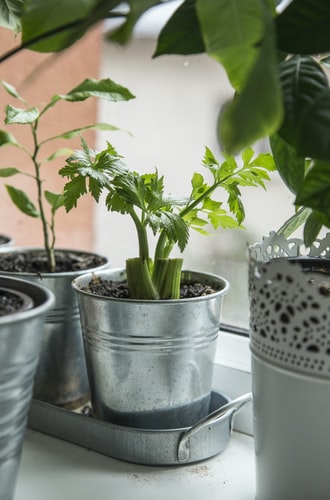With the shift to working at home and increased isolation during the pandemic, many people turned to plants to fulfill their need for outdoor healing. Houseplants have become a popular commodity but can be costly to purchase from stores or garden centers. Instead, a peek into your green bin might be the way you collect your next plant – it is a guaranteed way to save you money and reduce your food waste.
There are several fruits and vegetables frequently found in grocery stores that can create an ideal indoor or outdoor garden for plants enthusiasts. If you are looking for your next plant project or want to grow your green thumb, here are some plants you can grow using your kitchen scraps and how you can achieve the garden of your dreams.
Celery
Celery is the superfood of a few summers past, and like many other vegetables, it is a nutritious addition to your diet (Eating Healthy Vegetables Has Become The Goal Of Many People In 2021 – (holrmagazine.com)). Luckily, it is very easily grown once you have bought a bundle from the store. Most celery is sold with the bottom root attaching the stalks, which is the only part needed in order to grow the plant. Simply cut the stalks, leaving about 5 centimeters from the base of the plant and submerge only the root in a shallow dish of water. Replace and refill the water as needed to keep it submerged. After 1 to 2 weeks, there should be new growth from the center of the plant. You can then pot your root in soil – either indoors or outdoors – by planting only the bottom 5 centimeters. To harvest the celery, cut the number of stalks required and leave the root in soil to allow the plant to continue growing. Other vegetables or greens sold with their roots attached like lettuce and cabbage can also be planted the same way.
Pineapple
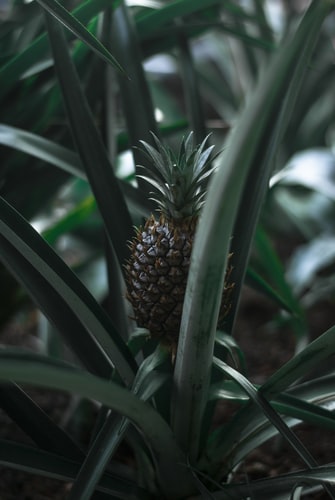
Growing a tropical plant like pineapple may seem intimidating, but they can thrive as indoor plants when given the right care. To grow a pineapple plant, cut or rip the crown off a pineapple fruit, leaving the green top and optionally up to 2 centimetres of the fruit. Make sure to cut any fruit attached to the crown into a circle, matching the diameter of the green top. To make sure your crown has the roots still attached, looks for small, white nubs that attached the crown to the pineapple fruit. Cut or rip the lower rows of leaves to give the plant space to grow a proper root system, then place your plant in a shallow dish with only the bottom 2 to 3 centimetres of the crown submerged in water. Within a few weeks, your plant will grow longer roots and will be ready for potting. Water lightly every 3 days for the first 1.5 weeks after potting, then switch to once or twice a week. Pineapple plants make very beautiful houseplants (Why Houseplants Are An Essential For Any Indoor Space – (holrmagazine.com)) but they can grow to over a meter in height and width, so give it the space and direct sunlight it requires. It can take the plant 2 to 3 years to mature and flower, but if it does, it has the potential to fruit.
Ginger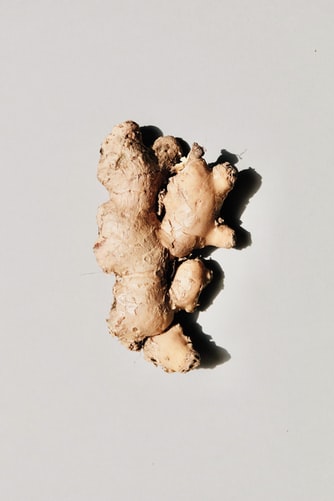
Ginger is a tropical root that is used as an aromatic or flavourful ingredient that is known for its anti-inflammatory properties. Harvesting ginger outdoors can be tricky because it does not do well with frost, so keeping it in a large pot or bin indoors can produce a much better yield. To grow ginger at home, simply use a piece of ginger bought from the store – also called a rhizome – that looks to have growths sprouting. It can either be planted in well-draining soil whole or cut into several pieces. Soaking your ginger in water overnight prior to planting can also help it grow faster. Plant the rhizomes around 10 centimeters deep with the growths facing up and leave it in an area where it receives warmth and indirect sunlight. Water occasionally to keep the soil moderately moist and harvest after 9-12 months.
Garlic
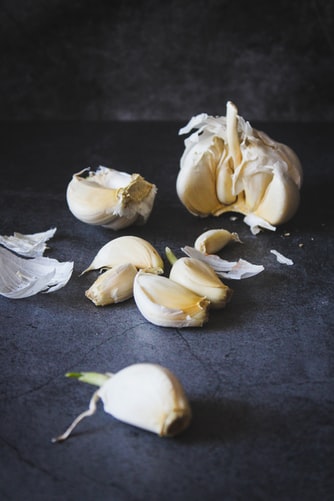
Much like ginger, a bulb of garlic can be grown extremely easily simply by planting a single clove into soil. Ideally, look for a clove that is already growing a green stem, or simply leave a clove out on your counter for a couple of days to see if it grows on its own. If not, it is still possible to plant a clove into soil, about 2.5 centimetres deep in well draining soil (and around 10 centimetres apart if you are planting several cloves), with the head (the thicker end of the clove) facing down. Green stems will begin sprouting from the cloves, which can be used in cooking when cut. To allow the clove to grow an entire bulb, leave the plant to grow for around 8 or more months until the stems appear drier and browner in colour. The bulb will then be ready for harvesting. Garlic can grow during the winter, but only if the soil has been well protected from frost and snow by using mulch or hay to cover the ground. Otherwise, garlic can be grown in pots indoors.
Tomatoes

Tomatoes are the quintessential summer vegetable to grow in your garden. The plants only take a month or two to start producing fruit, however, growing them from seeds requires some time and preparation beforehand. In order to grow tomatoes from seeds, the seeds must first be cleaned and dried sufficiently. To have seedlings ready for outdoor planting, plant your seed in peat pots (Peat Pots: Biodegradable Planters For Your Garden | Epic Gardening) or small containers prepared with damp potting soil around 3 months before planting season. Your seeds should germinate within the first 2 weeks and grow into seedlings within 2 to 3 months. Once your seedlings have grown and the last frost has passed, plant your seedlings outdoors. Tomato plants take around 1 to 2 months to produce fruit and continue to fruit until fall. Other seeded vegetables like peppers, corn, beans, pumpkins and even sunflowers can be grown using the same method.
Strawberries
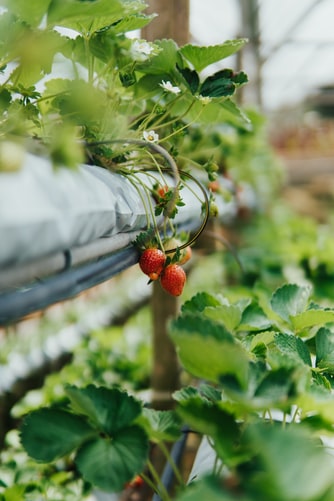
Strawberries can be a tricky plant to grow, but patience and the right conditions can result in a supply of fruit to last an entire summer. Strawberries are unique because the seeds are actually outside of the fruit – they line the exterior and can be gently picked off the flesh using tweezers or your fingers. If that is too difficult or time consuming, cutting a thin layer off the surface of the fruit while keeping the seeds intact can suffice. To grow strawberries, simply plant the seeds a few millimeters in the soil or place the layer of fruit on the surface of the soil. The seeds can take nearly 3 weeks to germinate and an additional 2 to 3 months before seedlings grow. Strawberry plants grow best in elevated soil or hanging baskets, therefore planting seedlings in those types of areas would help encourage growth. It can take up to 6 months for the plant to mature and start flowering. Strawberries are perennial plants and can grow well indoors or outdoors; however, they cannot survive cold temperatures, so keep seedlings or young plants inside until summer rolls around.
Published on Holr Magazine


